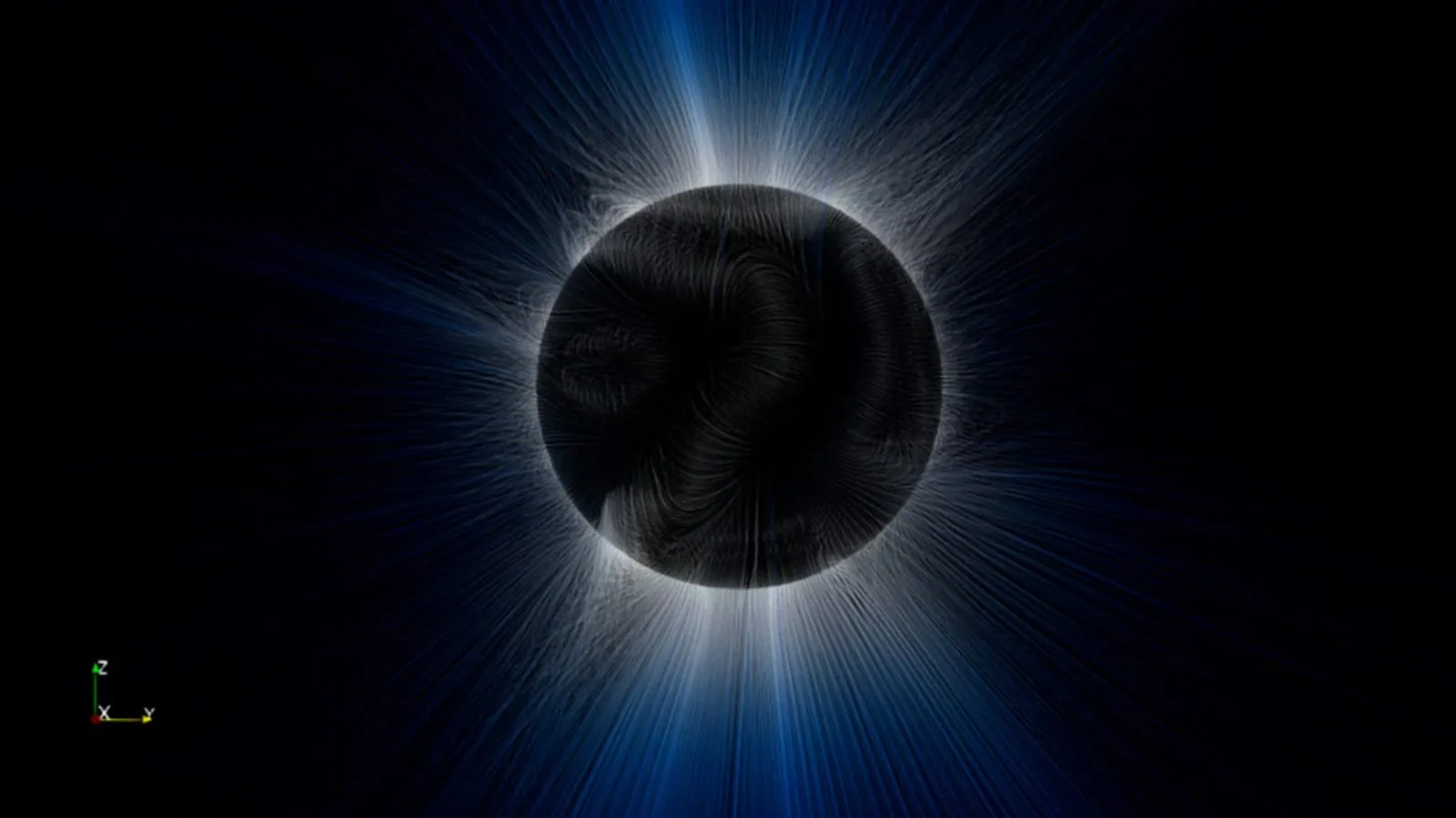This Is Proba-3's First Artificial Total Solar Eclipse in the World

The Proba-3 mission of the European Space Agency (ESA) revealed this Monday, June 16, the first images of the Sun's outer atmosphere: the solar corona.
The Proba-3 mission of the European Space Agency (ESA) revealed this Monday, June 16, the first images of the Sun’s outer atmosphere: the solar corona, with which the mission’s two satellites, capable of flying as a single spacecraft thanks to a set of on-board positioning technologies, have managed to create the first “artificial total solar eclipse” in orbit. In this sense, the ESA shared that the images of the corona obtained not only demonstrate the potential of formation flight technologies, but also provide scientific data of great value capable of improving our understanding of the Sun and its enigmatic atmosphere.
¿cómo Logró Proba-3 Formar El Primer Eclipse Solar Total Artificial Del Mundo?1223
Last March 2025, Proba-3 achieved what no other mission had done before; its two spacecraft, the Coronagraph and the Occulter, flew 150 meters apart in perfect formation for several hours without any control from the ground. While aligned, both maintain their relative position with an accuracy of up to one millimeter, an extraordinary feat made possible by a set of innovative navigation and positioning technologies.
Related Articles
“They align with the Sun in such a way that the 1.4 m diameter disc carried by the Occulter satellite covers the bright disc of the Sun for the Coronagraph, casting an 8 cm shadow on its optical instrument, **ASPIICS”, the ESA said in its statement.* The images of the corona obtained in the first rounds of ASPIICS observations offer a preview of the valuable data that the ESA can expect from this eclipse-creating mission. “Many of the technologies that enabled Proba-3 to perform precise formation flights have been developed through the ESA’s General Support Technology Program, as has the mission itself. It is exciting to see how these impressive images validate our technologies, in the world’s first precision formation flying mission,” said Dietmar Pilz, ESA’s Director of Technology, Engineering and Quality.
The Step-by-step Process to Create an Artificial Solar Eclipse3156
Following the meticulous dance of the Proba-3 satellites, the images of the artificial total solar eclipse were processed by the ASPIICS Science Operations Center (SOC), located at the Royal Observatory of Belgium. There, a specialized team of scientists and engineers creates the operational commands for the coronagraph, based on requests from the scientific community, and shared the observations obtained. In this regard, Andrei Zhukov, principal investigator of ASPIICS at the Royal Observatory of Belgium, explains:
“Each complete image, which covers the area from the occulted Sun to the edge of the field of view, is constructed from three images. The only difference between them is the exposure time, which determines how long the coronagraph’s aperture remains exposed to light. By combining the three images, we get the complete view of the solar corona”. He also noted that the images of the first artificial total solar eclipse are comparable to those taken during a natural eclipse. The difference, he says, is that an eclipse can be created for every 19.6-hour orbit, while total solar eclipses only occur naturally about once a year, very rarely twice. In addition, natural total eclipses only last a few minutes, while Proba-3 can maintain its artificial solar eclipse for up to six hours. “Although we are still in the commissioning phase, we have already achieved formation flight with unprecedented precision. This has allowed us to capture the first images of the mission, which will undoubtedly be of great value to the scientific community,” said Andrei Zhukov.
A New Era for the Creation of “digital Eclipses”?4947
According to the ESA, the impressive images of Proba-3’s first artificial total eclipse are also causing a “small revolution” in the way computer models simulate the solar corona and generate “digital eclipses”. In recent years, many institutes in Europe have developed models to simulate these observations and provide scientists with the means to observe the Sun. However, until now there was a lack of observational data to create their simulations.
“Current coronagraphs are not comparable to Proba-3, which can observe the solar corona almost to the very edge of the solar surface. Until now, this was only possible during natural solar eclipses”, said Jorge Amaya, Space Weather Modeling Coordinator at the ESA.
The Technology behind the First Artificial Total Solar Eclipse5734
This enormous flow of observations, the ESA stressed, will help to further refine computer models, as variables are compared and adjusted to match real images. Together with the KU Leuven team, responsible for one of these models, the first observations of Proba-3 have already been simulated. KU Leuven’s “COCONUT” software is one of several solar corona models integrated within the ESA’s Virtual Space Weather Modeling Center (VSWMC). This technology can be combined with a wide variety of computer models that describe other physical processes that connect the Sun to the Earth. Together, they help to offer a complete picture of the solar phenomena that affect the planet, helping both citizens and industry to prepare for them.
Related Articles
More Articles

How is Labor Poverty in Aguascalientes at the Close of Q3 2025?
Nov 27, 2025

Aguascalientes Industry Performance as of July 2025: INEGI Report Unveils Key Insights
Nov 10, 2025

How Did Fibra Uno Achieve 13% Compound Annual Growth Over 14 Years?
Nov 28, 2025

How Will the 40-Hour Workweek Reduction Be Implemented in Jalisco?
Dec 3, 2025

CNTE Protest in Guadalajara on November 14: Traffic Impacts Expected
Nov 13, 2025

2026 Revenue Law: What Budget Will the Potosí Capital Receive?
Nov 27, 2025
